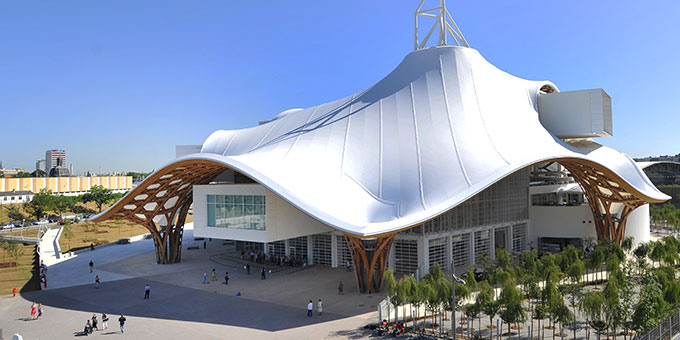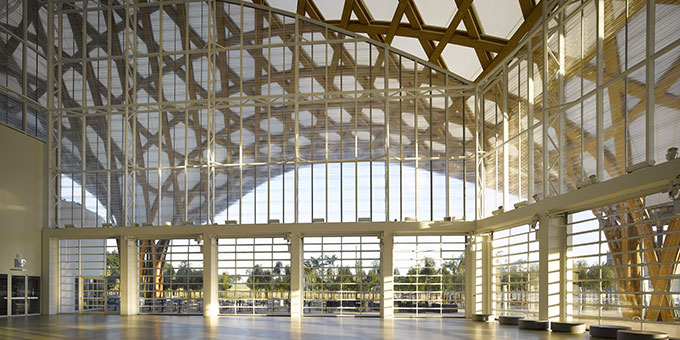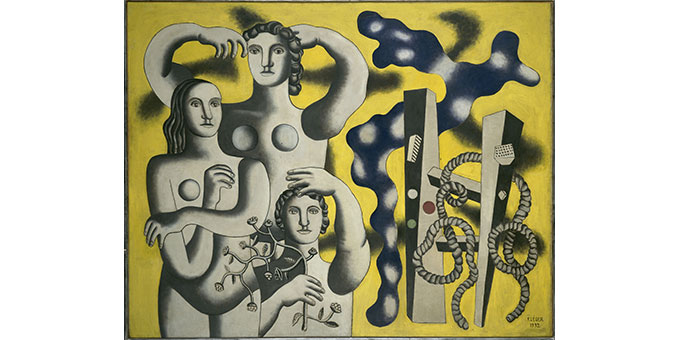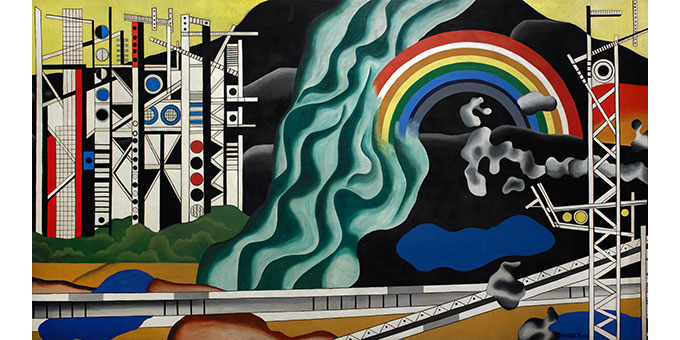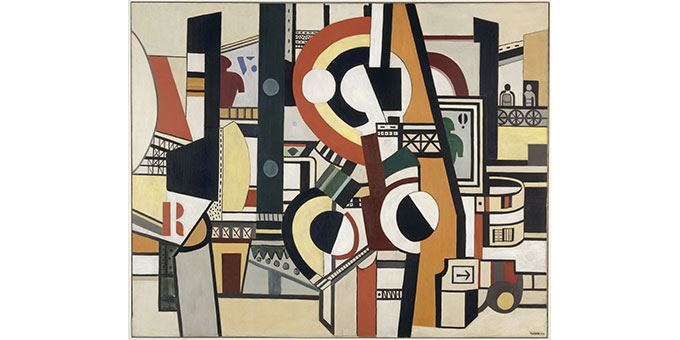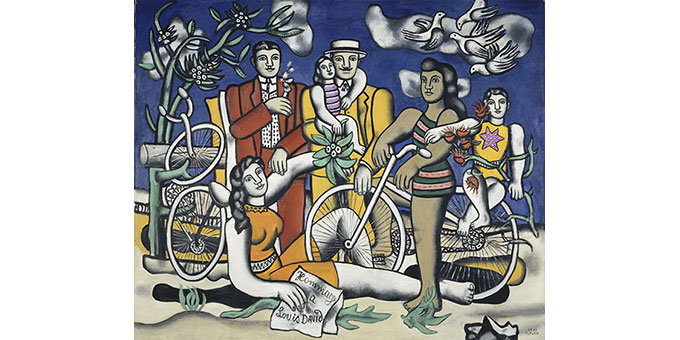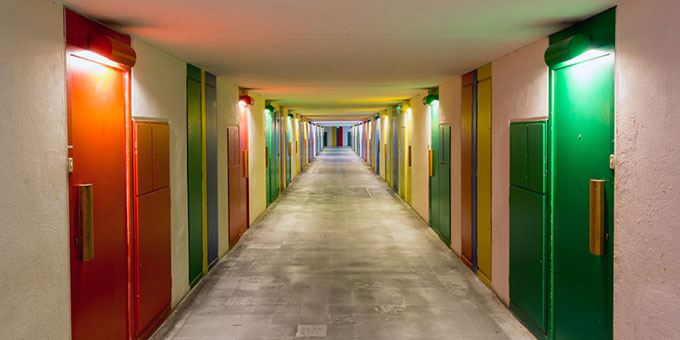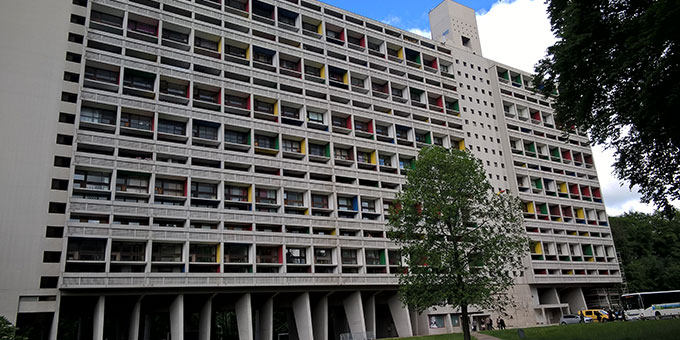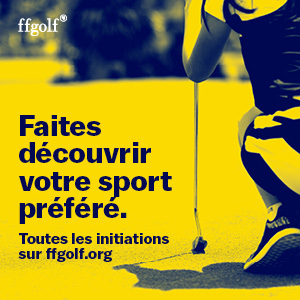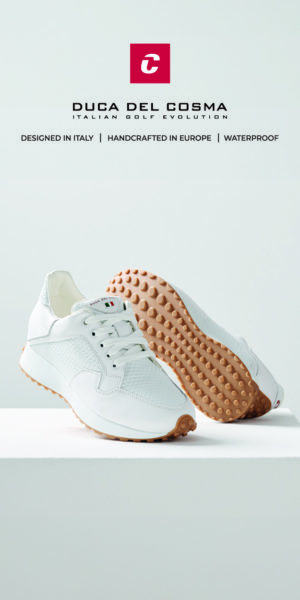Posted on June 14, 2017 in Arts & culture.
Fernand Léger exhibition at the Pompidou Center in Metz
Twenty years after the Paris retrospective organized in Beaubourg, the Center Pompidou-Metz pays tribute until October 30 to the multidisciplinary personality of the painter Fernand Léger. Presented at the Cité radieuse de Briey until September 24, the Le Corbusier and Léger exhibition. Polychrome visions, invites as for it, to rediscover the iconic building of the architect located 40 minutes from Metz.
Five decades of creation
Bringing together five decades of creation, the thematic journey reflects the living image of painting being invented. Nourished by the vitality of its time, Léger's work aims to go beyond its framework, to unfold on the screen, on the stage or on the city walls. Beyond the renewal of forms, his transdisciplinary approach is linked to his political commitment and his desire to bring art into everyday life. “For Fernand Léger, the object is no longer a set of inert forms, but an aggregate of living cells that animate space. The object is therefore essentially dynamic, and its apparent immobility, under the grid of form, constitutes on the contrary an element of mobility. Also Léger will choose disparate patterns, mechanical elements, flower, human body, tree, key, etc., so that he will suggest shows that cannot, like certain musical compositions, and also in accordance with certain cubist principles, translate into no other language than that of painting ” wrote in his work in 1950, entitled Modern Painting by Skira editions, the art critic and defender of the first hour of cubism Maurice Raynal. Close from the time of the Golden Section in the years 1912-1913, Raynal and Léger remained friends throughout their lives. The critic wrote the first monograph on the painter, commissioned in 1920 by Léonce Rosenberg. The exhibition catalog pays tribute to him with numerous photographs which testify to the studious atmosphere in Fernand Léger's Parisian workshop or sporty and festive during weekends spent with friends in Normandy. On his death Léger will greet “The most sensitive and understanding historian of our pictorial era”.
Exceptional loans
This remarkable monographic exhibition is also based on the exceptional loan of numerous works from the Center Pompidou, the national museum of modern art, (La Noce, Elements Mécaniques, Charlot cubiste, Le Cirque Médrano) completed with major pieces from major public and private collections. international (Le Balustre, Museum of Modern Art in New York, Le Pont, Carmen Thyssen-Bornemisza Collection in Madrid, Le Typographe, Philadelphia Museum of Art). Through numerous archival documents, she also presents the different facets of man: author of founding texts on painting and his time, great traveler, teacher in whose studio hundreds of artists trained. Twenty years after the retrospective organized in Paris, the Center Pompidou-Metz is celebrating under the enlightened aegis of the exhibition curator Ariane Coulondre, the extraordinary personality of a great name of the avant-garde. With its exceptional loans, the exhibition is a flagship event of the 40th anniversary of the Center Pompidou, whose fundamental missions are in perfect resonance with the ideals of Fernand Léger: openness to creation in all its forms. , accessibility to the greatest number. Presented in a territory marked by industrial history, this thematic exhibition finds its legitimate expression.
Léger and Le Corbusier at the Radiant City of Briey
In dialogue with the retrospective Fernand Léger. Beauty is everywhere at the Center Pompidou-Metz, the exhibition Le Corbusier and Léger. Polychrome visions, presented at the Cité radieuse in Briey, invites you to rediscover the iconic Le Corbusier building located 40 minutes from Metz. The exhibition, designed in partnership with the association La Première Rue and the Val de Briey, benefits from the generous support of the Le Corbusier Foundation. It links the architect's thought to that of the painter, revealing their long friendship marked by a common celebration of color. After discovering the region on the Verdun front during the First World War, it was in the Briey basin, in 1940, that Fernand Léger imagined the decor of a popular aviation center. This project to democratize aeronautics, interrupted by the war, finds a very particular echo in Le Corbusier's passion for what he called "flying machines". A few years later, it was the architect's turn to explore Lorraine, experimenting with polychromy in the construction of the Saint-Dié factory, before designing his Residential Unit in Briey in the 1950s. Fernand Léger, an apprentice from 16 years old in an architectural firm, had an early interest in this field. Convinced of the interdisciplinarity of the arts, he campaigned in favor of a “three-way agreement” between the wall, the architect and the painter. Through a rich set of archival documents, magazines, films, photographs, correspondence, many of their projects linking architecture and painting, sometimes unknown, are highlighted here in an amazing and exceptional setting.
In 2017, the Center Pompidou is celebrating its 40th anniversary throughout France.
Seventy-five partner venues, 50 exhibitions, 15 shows, concerts and performances: until the beginning of 2018, the Pompidou center is celebrating 40 years of its creation in forty French cities. From Grenoble to Lille, via Le François en Martinique, Saint-Yrieix-la-Perche, Chambord, Cajarc or Nice, one-night events or six-month exhibitions will be presented to as many people as possible. Proposals that combine exhibitions, concerts, theater and dance performances, conferences and which will invite all audiences to experience and share the originality of the Center Pompidou.
David Raynal
To know more : https://www.centrepompidou.fr/
Drawing Now Art Fair: Tatiana Wolska winner 2024
The invention of language by Gertrude Stein and Pablo Picasso
The history of French women's golf at Golf du Sorbier






